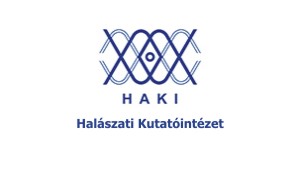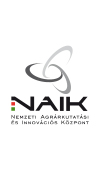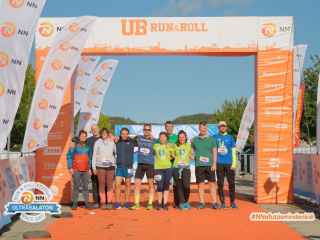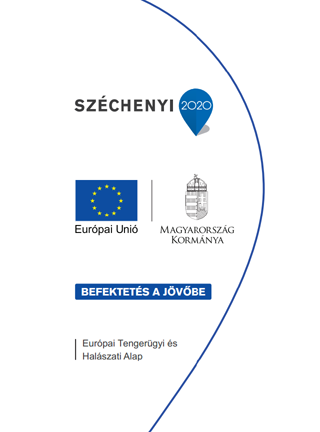Recent investigations and findings in pikeperch culture at NAIK HAKI
Uros Ljubobratovic, Endre Balogh, Geza Peter, Svetlana Lengyel, Andras Peteri, Istvan Csengeri, Andras Ronyai
National Agricultural Research and Innovation Centre, Research Institute for Fisheries and Aquaculture, Szarvas
Introduction
In the past two years we have conducted several trials and investigations with aim to improve the two most critical parts of pikeperch culture, artificial reproduction and larviculture. The work has begun with AQUAEXCEL TNA through project “Improved pikeperch propagation” and continued with recruitment of lead researcher through EU FP-7 project AQUAREDPOT (reference number: 316266) and start of the project “Improvement of artificial propagation of economically important percid fish species (pikeperch, perch) with special regards to geographical distribution” financed by Hungarian Ministry of Agriculture.
Main aim of our research was to overcome the main bottlenecks in the culture of this species. As previously mentioned by many studies totally controlled (artificial) propagation and larviculture were found to be the critical steps for stable production of quality fingerlings suitable for intensive on-grow (Kestemont et al., 2007; Zarski et al., 2012;). Asynchronous latency time, spontaneous ovulation, stripping difficulties, breeders mortality and poor hatching after non suitable egg de-adhesion process were found to be hindering factors for successful artificial propagation. Semi-intensive reproduction with usage of nests offered rather straightforward technology to obtain reproductive material (Ronyai, 2007; Muller-Belecke and Zienert 2008). However, its main disadvantage is the limited control over the parents and with it narrowing the possibilities for the breeding programs. Therefore, we dedicated trials and investigations in order to establish reliable de-adhesion methodology and to pursue for possibilities for successful and non-harmful fully controlled propagation.
After the gamete collection, in-vitro fertilization and incubation, critical point of production is the management of larval rearing in order to obtain juveniles suitable for intensive rearing. Pond rearing of larvae and habituation of juveniles on artificial diets was described as a promising option for production of high quality fingerlings (Policar et al., 2013). However, such an extensive pond rearing is rather limited by the external conditions and its seasonality is leaving less space for out-of-season production. Even though requiring the higher state of technological development, larviculture – intensive rearing of fish larvae – offers the alternative which is not restricted by any noncontrollable environmental parameter. In this specific technological procedure, there are several biological processes which have been explained as critical as they were connected to the increase in mortality rate. Alongside with start of exogenous feeding and swim bladder inflation, weaning period was found to be rather demanding issue from both technological and nutritional aspect. With this regard, two trials were pointed toward weaning strategies.
Discussion
During our two years of research, we have managed to gather significant answers in order to develop stable production technology of pikeperch stocking material. The egg de-adhesion method with milk and kaolin has been replicated both on our site and site of fish farn H & H Carpio Kft. (Ocsard, Hungary). Complications with egg de-adhesion in this species have been already described (Demska-Żakęś et al. 2005; Rónyai & Gál 2008). Therefore, we may imply that we have established rather simple and universal technology applicable in all hatcheries without concern of water quality issues and product quality. Even though this is just a start of a comprehensive research in order to produce and successfully reproduce the high quality broodstock, our developed propagation techniques are enabling us to go forward. With this regard, our plans and prospects are to reproduce the different lines, such as wild and intensively reared fish and to examine their reproductive performance.
Intensive rearing of pikeperch larvae has been described as the main bottleneck for the stable pikeperch production. This species has rather unique larval ontogeny and needs special concerns from both environmental and physiological side. Therefore, preparing its digestive system and behavioural response on formulated feeds requires two side approach. From one side, in order to see and recognize the feed as a food, larvae should be uniformly distributed in the rearing volume and this is mainly the function of tank design, illumination and water transparency. Our observations which are in agreement with results obtained on the pikeperch’s North American relative walleye, are that a preferable conditions can be achieved with combination of suitable tank walls colour which minimizes the light reflection, water turbidity, suitable light intensity and type of application. Further, in the technology based on first feeding with live feeds weaning on dry feed has a strong effect on the final success. Therefore, our results suggesting that weaning through long co-feeding period minimizes the lost has an important weight for the success of this critical protocol. In order to go further, our plans are to compare described larviculture procedures (FAO, 2012) and analyse their pros and cons. Finally, we aim to check viability and performance of larvae obtained from intensively reared broodstock compared to wild ones.
Demska-Żakęś K., Żakęś Z. & Roszuk J. (2005) The use of tannic acid to remove adhesiveness from pikeperch, Sander lucioperca, eggs. Aquaculture Research 36, 1458–1464. DOI: 10.1111/j.1365-2109.2005.01370.x
FAO 2012 – Cultured Aquatic Species Information Programme. Sander lucioperca. Cultured Aquatic Species Information Programme. Text by Zakês Z. In: FAO Fisheries and Aquaculture Department [online]. Rome, Italy. http://www.fao.org/fishery/culturedspecies/Sander_lucioperca/en
Kestemont, P., Xueliang, X., Hamza, N., Maboudou, J., ImorouToko, I. 2007. Effect of weaning age and diet on pikeperch larviculture. Aquaculture, 264: 194-204. doi: 10.1016/j.aquaculture.2006.12.034
Müller-Belecke, A. and Zienert, S. (2008), Out-of-season spawning of pike perch (Sander lucioperca L.) without the need for hormonal treatments. Aquaculture Research, 39: 1279–1285. doi: 10.1111/j.1365-2109.2008.01991.x
Policar T., Stejskal V., Kristan J., Podhorec P., Svinger V., Blaha , M. (2013) The effect of fish size and density on the weaning success in pond-cultured pikeperch (Sander lucioperca L.) juveniles. Aquac. Int. 21: 869 - 882.
Rónyai A. (2007) Induced out-of-season and seasonal tank spawning and stripping of pike perch (Sander lucioperca L.). Aquaculture Research 38, 1144–1151. DOI:10.1111/j.1365-2109.2007.01778.x
Rónyai A. & Gál D. (2008) Deadhesion of the eggs of pikeperch (Sander lucioperca L.) In: Percid Fish Culture, from Research to Production. (ed. by P. Fontaine, P. Kestemont, F. Telechtea & N. Wang), p. 126. Presses Universitaires de Namur, Namur, Belgium.
Żarski D., Kucharczyk D., Targonska K., Palińska K., Kupren K., Fontaine P. & Kestemont, P. (2011) A new classification of pre-ovulatory oocyte maturation stages in pikeperch, Sander lucioperca (L.), and its application during artificial reproduction. Aquaculture Research 43, 713–721. DOI: 10.1111/j.1365-2109.2011.02879.x
Acknowledgements: The present study was partially supported by the AQUAREDPOT EU FP7 project (No: 316266), regarding the processing from the statistical point of view of the raw data obtained during this research
Programajánló
Hírek
Tisztelt Látogatók!
A hazai agrár-felsőoktatás szükséges megújulásának mérföldköve az alapítványi fenntartású Magyar Agrár- és Élettudományi Egyetem (MATE) létrejötte, amely 2021. február 1-től 5 campuson, több mint 13 ezer hallgató számára fogja össze a dunántúli és közép-magyarországi élettudományi és kapcsolódó képzéseket. Az intézményhez csatlakozik a Nemzeti Agrárkutatási és Innovációs Központ (NAIK) 11 kutatóintézete is, így az új intézmény nem csupán egy oktatási intézmény lesz, hanem az ágazat szellemi, szakpolitikai és innovációs központjává válik, amely nagyobb mozgásteret biztosít a képzések, a gazdálkodás és szervezet modernizálásához, fejlesztéséhez. Az összeolvadással magasabb fokozatra kapcsolunk, a kutatói és egyetemi szféra szorosabban fonódik majd össze, aminek következtében még több érdekes, izgalmas kutatás-fejlesztés születhet majd az agrárium területén.
Kérjük, kövesse tevékenységünket a jövőben is a www.uni-mate.hu honlapon!
A szokásostól eltérően az idei évben ősszel, október 03-04 között került megrendezésre az Ultrabalaton csapatversenye. NAIK-os csapat az idei évben állt először rajthoz a 14. alkalommal kiírt versenyen.



